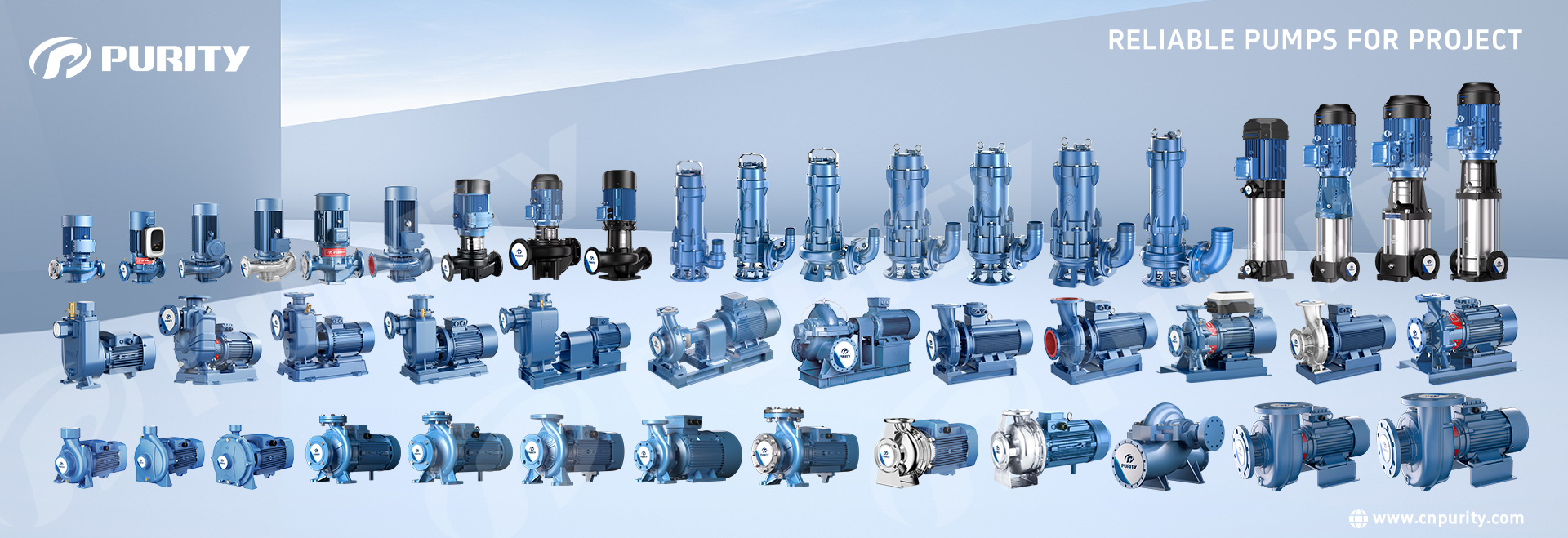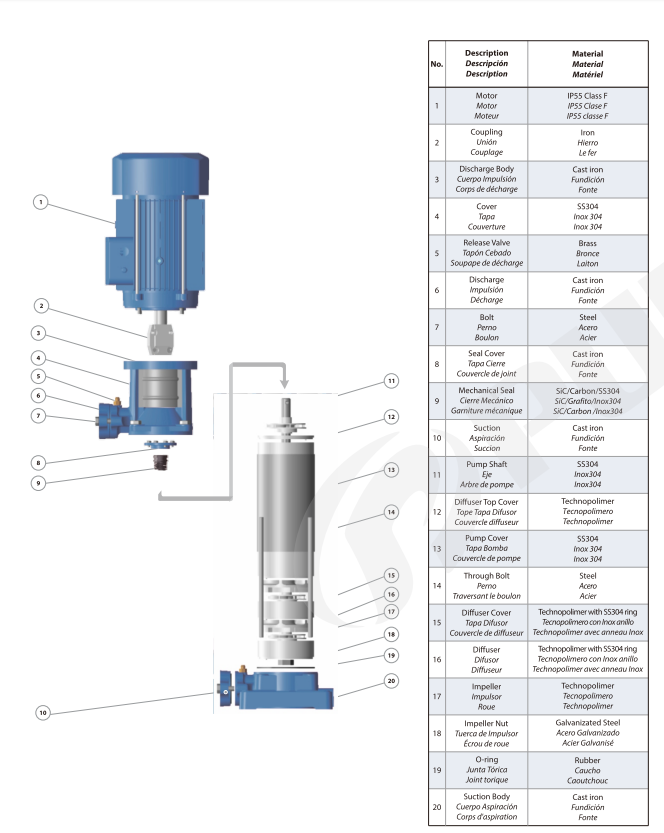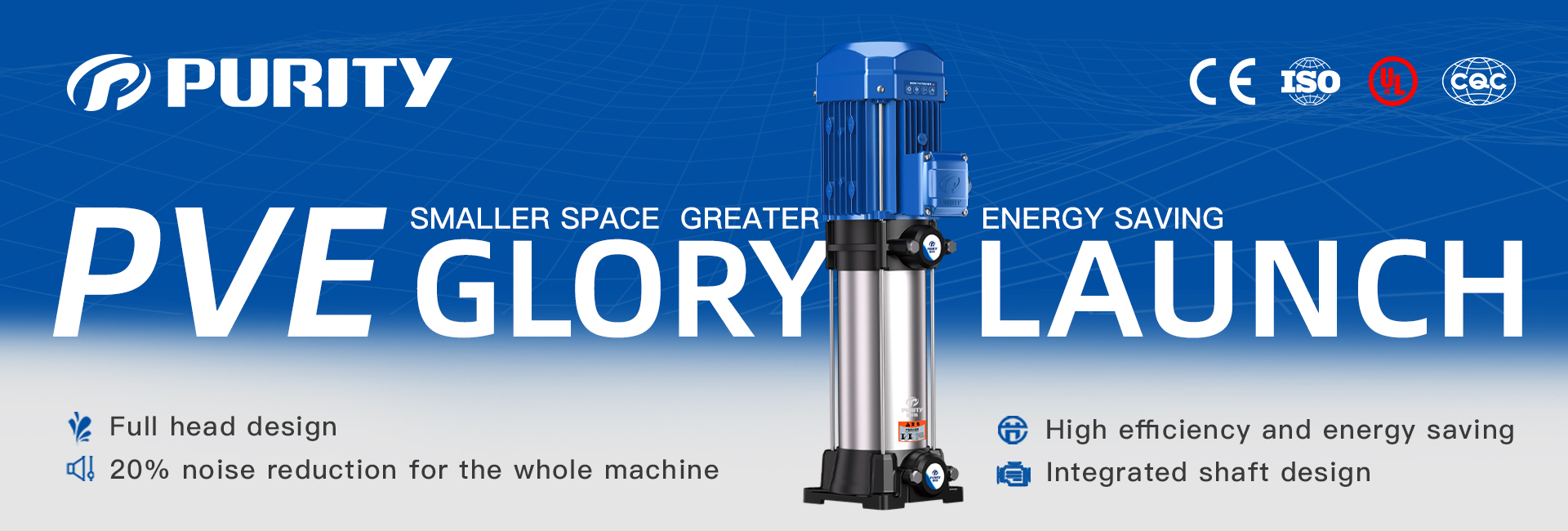When it comes to choosing the right pump for industrial and commercial applications, two of the most commonly discussed types are single-stage centrifugal pumps and multi-stage centrifugal pumps. Both serve critical roles in fluid transportation, but understanding their differences is crucial for optimizing performance, efficiency, and cost-effectiveness. In this article, we will explore the differences between these two types of pumps, their applications, and key considerations for choosing the right one for your needs.

Figure | Purity centrifugal pump family portrait
Centrifugal pumps are mechanical devices used to move liquids through a piping system. They work by converting the rotational energy from a motor into kinetic energy in the fluid. The pump impeller, when powered by a motor, creates a vacuum that draws fluid into the pump and expels it at high pressure. Depending on the design, the pump can have either a single impeller or multiple impellers working in series to achieve the required pressure.
A single-stage centrifugal pump features a single impeller that is connected to a motor shaft. This pump is ideal for applications that require moderate flow rates and lower pressure levels. The impeller in a single-stage pump is responsible for moving the fluid through the system, and the simplicity of the design makes it cost-effective and easy to maintain.

1.Number of Impellers: One
2.Maximum Head: Typically up to 125 meters
3.Applications: Domestic water supply, heating systems, agricultural irrigation, sewage handling, and light industrial processes.
4.Efficiency: High due to simple design, resulting in lower operational costs.
5.Installation and Maintenance: Easier and more cost-effective compared to multi-stage pumps due to the simpler structure.
Single-stage centrifugal pumps are commonly used in applications such as fire pump jockey systems, where moderate pressure is needed to maintain optimal pressure in the system. They are also used as jockey pumps in fire protection systems, ensuring that water is always available and ready for higher demand if the fire pump needs to kick in.
A multi-stage centrifugal pump, on the other hand, incorporates two or more impellers arranged in series. The design allows each impeller to gradually increase the fluid pressure as it passes through each stage. These pumps are typically used when higher pressures are required and are known for their ability to deliver higher heads (more pressure) than single-stage pumps.

1.Number of Impellers: Two or more, arranged in series
2.Maximum Head: Often exceeds 125 meters
3.Applications: High-rise building water supply, deep well pumping, boiler feed systems, water treatment, and other industrial applications that require high pressure.
4.Efficiency: Can be more energy-efficient in high-pressure scenarios, as they use smaller motors to achieve higher pressure.
5.Installation and Maintenance: More complex and costly compared to single-stage pumps due to their intricate design and higher maintenance requirements.
Vertical multistage centrifugal pumps are commonly used in water supply systems, especially for deep well pumping and applications where space is limited, such as in boiler feed systems. They provide reliable pressure across multiple stages and are essential in handling high-pressure fluid requirements.
The decision between a single-stage centrifugal pump and a multi-stage centrifugal pump largely depends on the specific needs of your application.
1.Single-Stage Pumps are ideal for situations where low to moderate pressure and flow rates are required. They are cost-effective, easy to install, and simple to maintain. Applications such as domestic water supply, air conditioning systems, and irrigation systems are perfect for single-stage pumps.
2.Multi-Stage Pumps are designed for high-pressure applications where higher heads are needed. These pumps excel in systems requiring substantial vertical lift, such as in high-rise buildings, deep well pumping, and industrial pressure systems. While multi-stage pumps have a more complex design, they are more energy-efficient in handling high-pressure applications.
Purity's PVE Multistage Pump stands out in the industry due to its innovative features. Designed with a full head range, the Purity PVE multistage pump ensures smooth operation across various flow points, preventing the risk of motor burnout and reducing repair costs. Additionally, Purity’s optimization of the traditional impeller structure helps reduce noise levels by 20%, making it an excellent choice for both industrial and commercial applications.

Figure | Purity new multi-stage pump PVE
In summary, both single-stage centrifugal pumps and multi-stage centrifugal pumps have their advantages and are suited to different applications. If you need a pump for low-pressure, moderate-flow scenarios, a single-stage pump is often the most cost-effective and efficient choice. However, if your application requires higher pressure or vertical lift, such as in fire pump jockey systems, boiler feedwater systems, or high-rise building water supply, a multi-stage pump is more appropriate.
Purity offers a wide range of pumps, including both single-stage and multi-stage centrifugal pumps, ensuring that you have the right solution for your needs. For energy efficiency, reliability, and long-term performance, Purity’s multistage pumps and jockey pumps are designed to meet demanding industrial and commercial requirements.
For more information or to make an inquiry, feel free to contact us today!